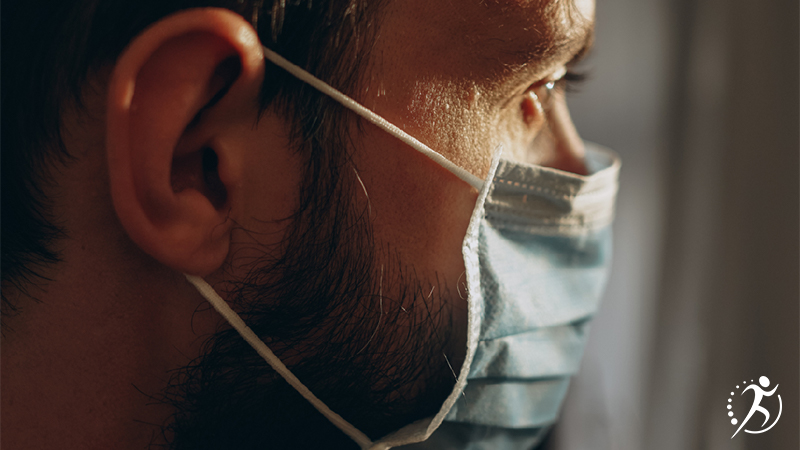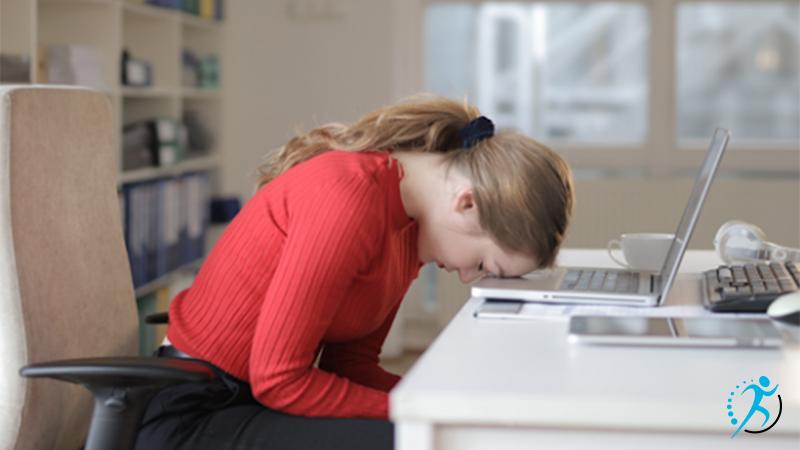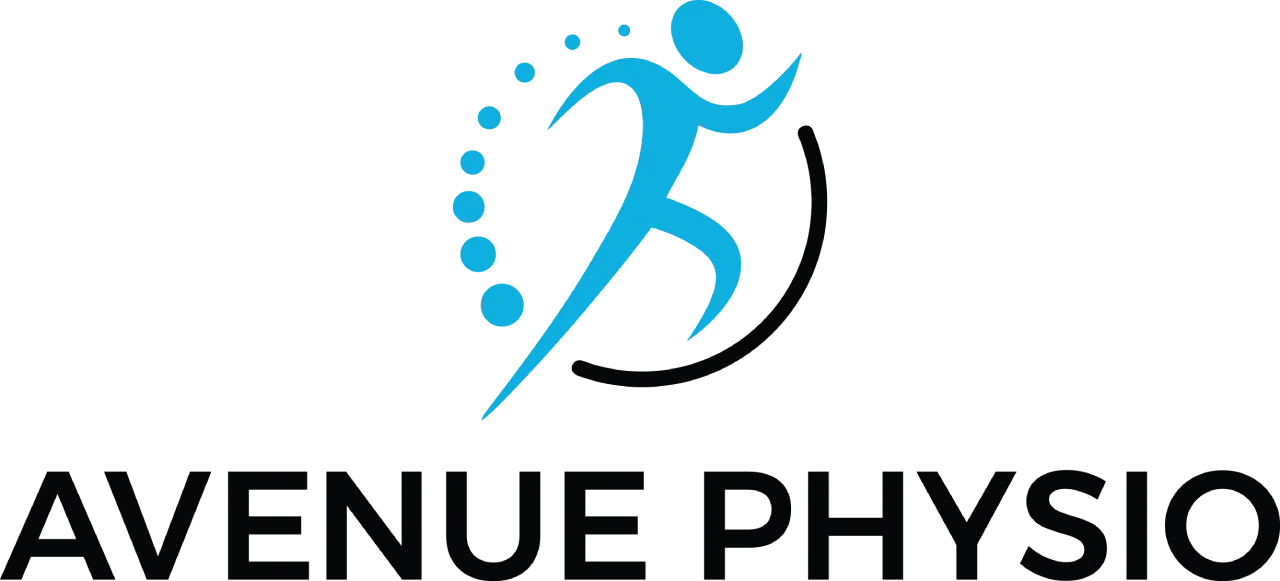
What are COVID19 long haulers?
In the ever-evolving story of coronavirus (Covid-19), an additional and concerning narrative is the subplot of the long hauler.
Long haulers are patients who have in theory recovered from the worst effects of Covid19 and have tested negative. However, they haven’t fully recovered and they continue to suffer from symptoms that last for weeks or months or longer.
In North America we call them post-COVID “long haulers.” In the United Kingdom, they are said to be suffering from “long COVID.” Another term is postviral-fatigue syndrome.
What is post-viral fatigue?
Fatigue is a feeling of constant tiredness or weakness and can be physical, mental or a combination of both. It is completely normal to feel this from time to time and especially now as we find ourselves living like Bill Murray in groundhog day. But sometimes this exhaustion can persist for weeks or months after you have been sick with a viral infection.
What causes post-viral fatigue?
Post-viral fatigue seems to be triggered by a viral infection. Experts aren’t sure why some viruses lead to post-viral fatigue, but it may be related to:
- an unusual response to viruses that can remain latent within your body
- increased levels of proinflammatory cytokines, which promote inflammation
- nervous tissue inflammation
Tens of thousands of people who have had COVID and are experiencing ongoing symptoms have taken to social media to share their stories on support groups.

Covid19 Long Haulers Support Group Canada is Canada’s largest online support group, a Canadian movement to connect Covid long haulers to support and information. The many posts reveal the ongoing struggles of these long haulers.
“Does anyone get random attacks of bad brain fog ? I always have it but it gets really bad sometimes.”
“Does anyone still have breathing issues months after the initial infection? I have serious breathing issues right now it starts with a cough, then heaviness in my chest then difficulty breathing, anyone in the same boat?”
“If I walk 100 metres, it feels like I’ve ran a 10k.”
“I had Covid about 4 weeks ago, and I’m starting to have weird chest pains that go through to my back, is this normal? I also get winded very easily.”
“Today marks 324 days ago since I was first sick. I started having daily dull headaches over a month ago, shortness of breath daily. I am also experiencing a weird neck weakness of sorts”
“Anyone have smell and taste back? It’s been almost 3 months.”
How common are lingering Covid19 symptoms?
We are now over a year into the pandemic and there are reported 734 000 recovered cases. If you are one of the recovered you are feeling lucky that you survived the virus. You feel relieved that the virus is no longer detected in your body. That means you should be feeling fine and relieved. But you’re not feeling fine.
You are just one of a growing number of Canadians who say they’re suffering from ongoing symptoms for weeks or months after their initial illness.
Recent research has found that one in three of those who contract Covid19 can go on to develop persistent symptoms.

Which lingering symptoms are common?
A study reported that long-haulers experienced a wide range of symptoms that frequently come and go. The top three symptoms are:
- Fatigue
- Tightness in the chest
- Shortness of breath

Who is more likely to become a long hauler?
Currently, we can’t accurately predict who will become a long hauler. Survivor studies are ongoing and have shown that people only mildly affected by Covid19 stall can have lingering symptoms and people who were severely ill can be back to normal in two months.
However, the data collected currently shows:
- over 80% of those with Long Covid were not admitted to hospital with their Covid19 symptoms,
- the majority (63%) are between 30-49 years old
- and most (68%) were moderately to very physically active before contracting Covid19.
How do you recover if you have had long haul Covid19 symptoms?
Most people who get Covid19 recover within a few weeks. It is important to follow up with your doctor for a thorough assessment if you are experiencing ongoing fatigue to rule out other medical conditions that may be causing your symptoms.
If you are presenting with post viral symptoms it is vital to get a diagnosis by ruling out other medical conditions because the management will differ from a typical recovery rehabilitation approach.
Questions to ask yourself post Covid19:
- Are you experiencing activity induced fatigue (both from physical or mental activity which normally would not cause you fatigue)?
- Are you experiencing flares up of your ongoing symptoms?
- Are you unable to maintain your previous levels of activity?
- Do you wake up in the morning feeling unrefreshed?
- Are you finding it hard to concentrate?
- Do you feel light headed or get a headache when you are standing that improves when you lay down?
The role of physiotherapy in treating long haul Covid 19
For physiotherapists, no matter what our speciality, exercise is our go-to treatment. It’s been shown to help almost every medical condition going, and is an important part of a healthy lifestyle.
However, any graded exercise programme, no matter how gentle it starts or how slowly it progresses, hinges on the concept that the person being treated is deconditioned. In general, this is why graded approaches to exercise work well for most other conditions.
With long haul Covid19 pushing patients beyond their capabilities will cause physiological reactions that will make symptoms worse. People with post viral fatigue report that “pushing themselves” causes a deterioration in symptoms.
Pain no Gain
Your physiotherapist and medical team should be actively avoiding any treatment that triggers Post Exertional Malaise.
Post exertional malaise (PEM) is the marked symptom exacerbation when patients exceed a certain activity level. The flare up of symptoms can persist for days, weeks or even months after the exertion.
Another challenge is that PEM is usually delayed, often by 24-48 hours after the triggering event. This makes it very difficult to determine what level of activity is “safe”.
Physiotherapy intervention should be individual, cautious and constantly evaluated and aim to focus on all the items below:
- Pacing (for both cognitive and physical activities)
- Heart Rate monitoring
- Rest and relaxation
- Pain management
- Activity management
- Sleep hygiene
- Emotional health

Pacing
Pacing is not a cure but is it essential as it makes the best use of your limited energy. It provides structure by building an optimum schedule to organize all the mental and physical activities planned for the day to minimize symptoms and maximize productivity. The goal of pacing is to manage your energy wisely and it will gradually increase
Tips around pacing:
- Establish a baseline ie: record activities and symptoms over 2 weeks
- Remember that it is both physical and mental activities
- Take regular rests throughout the day
- Break down activities instead of doing them all at once
- Prioritise – what needs to be done rather than what could be done
- Plan – schedule in a calendar what activities you are going to do during the day/week
Heart Rate Monitoring

Heart Rate monitors can help to monitor your body’s response to exertion so you can more accurately pace your daily activity. The goal of using a Heart Rate monitor is to stay under the “anaerobic threshold”.
The anaerobic threshold is the exertion level between aerobic and anaerobic training. It is the point when your body must switch from aerobic to anaerobic metabolism. This is where CO2 is higher than O2) We would normally determine your anaerobic threshold in heart rate beats/minute by calculating 220 – age.
People with Covid19 long haul (post viral fatigue) have a lower anaerobic threshold. They move into anaerobic threshold quicker than healthy individuals. Therefore, we calculate your anaerobic threshold at 50%.
Anaerobic threshold for Covid19 long haulers = (220 – age) x 50% = beats/minute
Rest and relaxation and Pain management
The list below outlines physiotherapy interventions that some people with post viral fatigue have described as being helpful. However everyone is unique as people with post viral fatigue have mentioned these techniques as unhelpful and resulted in an exacerbation of symptoms.
It is important to understand that every person is unique and their response to a treatment is unpredictable.
- massage
- meditation
- yoga
- acupuncture
- positional advice
- stretches
Activity Management – What about Rehab?
There is a time and place for rehab exercises but this needs to be closely monitored. If you already have a limited energy to get through your activities of daily living then adding in any aerobic or structured activity may cause a flare up and worsening of the symptoms and ultimately a longer recovery time.
It is important to work closely with your physiotherapist on pacing and finding your baseline to where you don’t have any prior to embarking on increasing activity. When you both determine you are ready they will ease you into some gentle movement.
- Gentle supine stretches
- Resistance exercise at small amplitudes with long rest periods
- walks below anaerobic threshold
There is no one approach that is suitable for all
The goals are consistent from one long hauler to another:
- Rest and recuperate (don’t push)
- Pacing (for both cognitive and physical activities)
- Aim to avoid symptoms and conserve energy
- Prioritise nutrition
- Prioritise sleep management

We are in it for the Long Haul
How many Canadians will become long haulers? Unfortunately with the numbers of cases increasing, as new variants crop up, and the time that it will take to roll out the vaccine we can only guess.
Right now more than over 1.5 million Canadians have been infected by the virus. And with estimations that between 30 – 70 per cent of Canadians could become infected with the COVID-19 and if just 5% develop lingering symptoms we will continue to see an increase in people reporting fatigue, shortness of
breath and other varied symptoms.
Covid19 is new and we are learning every day. As the data is collected we will continue to learn more. We will continue to learn how we can best support those of you who have ongoing symptoms related to covid19. We are in this together!
If you need support with ongoing symptoms related to Covid19 please call Avenue Physio at 403-234-9004 or email us with questions at info@fifthavephysio.com.
FAQ
The virus can be spread to others from someone who’s infected but not showing symptoms. This includes people who:
- haven’t yet developed symptoms (pre-symptomatic)
- never develop symptoms (asymptomatic)
This kind of spread is known to happen among those who are in close contact or are in enclosed or crowded settings.
Scientists and food safety authorities around the world are closely monitoring the spread of COVID19. There are currently no reported cases of COVID19 being spread through food.
Need help with aches and pains from sitting too much? Email Avenue Physio at info@fifthavephysio.com for some immediate advice and relief.

Written by Kelly Barrie
Kelly is the owner of Avenue Physio and proud to be part of a supportive and personable team that is dedicated to providing a high quality of treatment and experience to patients. She has been a physiotherapist for over 25 years treating a range of orthopedic conditions including chronic pain, motor vehicle collisions and sport injuries (from weekend warrior to high level). Kelly has always been passionate about movement and promoting healthy lifestyles. First, as a Certified Personal Trainer, and for the last 25 years as a physiotherapist. Kelly has completed the highest level of Certification in Manual and Manipulative Therapy that is internationally recognized (FCAMPT). Advanced knowledge of strengthening programs, manual therapy skills and critical thinking optimize her treatment plans for her patients so they can reach their movement goals.
References
